Who am I?
A curious human made of start stuff
I am a highly motivated and enthusiastic Data Scientist with experience in coding and performing data analysis. I was trained as a physicist, and during my PhD, I specialised in quantum mechanics simulations that provide insights into the correlation between the atomic structure of materials and the unusual physical properties they display which can lead to significant technological applications (e.g. high-temperature superconductivity, corrosion inhibition, optoelectronics.
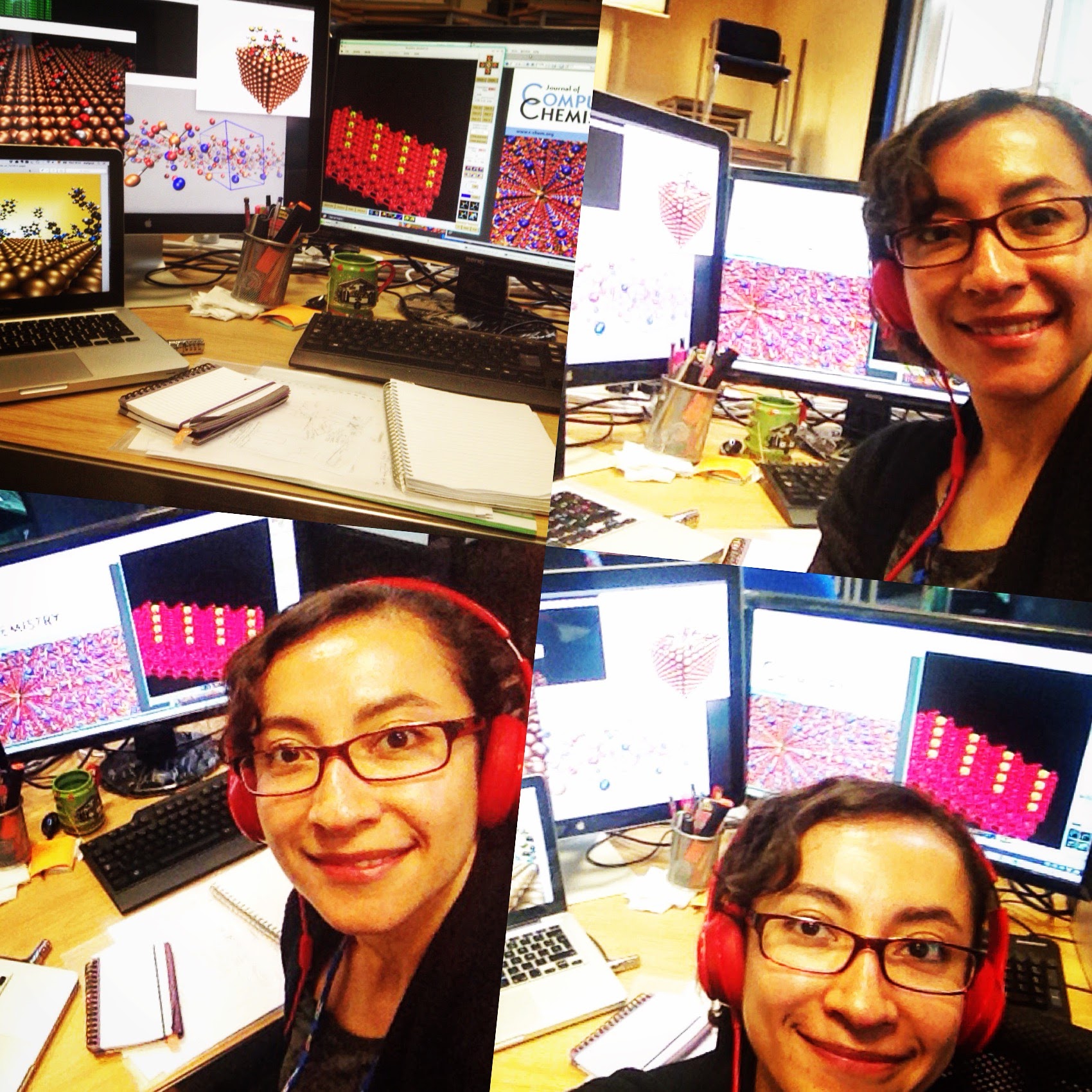
What are my goals?
I am pursuing a career as a Data Scientist and passionate about applying new technologies, machine learning, and data analytics to understand human behaviour, make strategic business decisions and develop products that help to improve people’s lives. I think we live in an age of turning data into innovative business and technological solutions, so I want to be part of that!
More about my background
I have a degree in Physics from Universidad de las Américas Puebla, and a PhD in Physics (Computational Material Science) from The National Autonomous University of Mexico. As a postdoctoral researcher, I worked at the Ludwig Maximilian University of Munich, Juelich Forschungszentrum. Afterwards, I came to the UK to work at Imperial College London. Science is also about working in multicultural environments; you can always get to know interesting things about the culture of colleagues.
I became excited about the Data Science field during my last year of postdoc, and I decided to participate in the Science to Data Science summer program organised by Pivigo. After five weeks of intensive work learning together and having fun with my team, we delivered a prototype price optimisation model which could yield multi-million-pound returns to one of the biggest car parts distributor of UK, the Parts Alliance Group. The best of the journey was to work with my team (and won the best presentation award together)! I love to work with people of different backgrounds to learn to see things from a different perspectives.
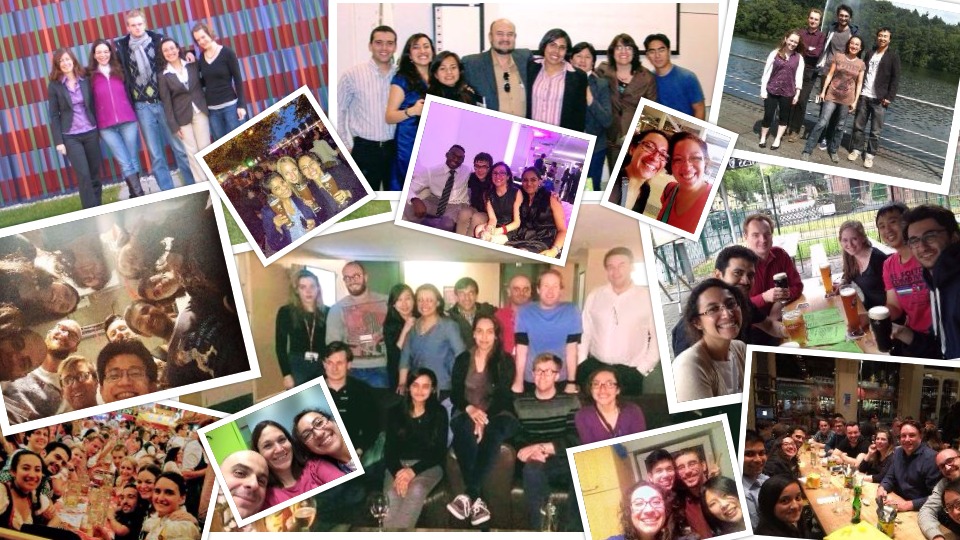
Innovating in the world!
During my time at Imperial College, I co-founded along with my friend Jing Sheng Pang, the concept of Neuron Technology Ltd, also part of the ICAH startups. We were looking for improving the working environment using data collected by IoT; the idea is creating a community aided building management system to improve user experience and building efficiency to reduce carbon footprints and enhancing users working areas. If you want to chat about Raspberry Pi and building a web app with Python, or anything to do with IoT, just give me a shout!
Hobbies
As you have noticed, I love Science! I am naturally curious and decided to become a physicist when I was five years old (one day I should post about the story). I like to inspire and make people think and feel curious. Therefore, I collaborate in a blog of popular science in Spanish, called “Pedazos de Carbono”, to boost critical thinking in Latin American countries. Other of my hobbies is attending Meetups, especially those that get involve women in tech areas. I love cooking (check my Facebook page), running, Bikram Yoga, painting, handicraft, take pics in Instagram and playing the guitar. But I love the most being part of the life of my friends which are around the world, but close to my heart :-).
An excellent starting to my Saturday is preparing fried eggs with shapes of a stars, astronauts and space rockets!
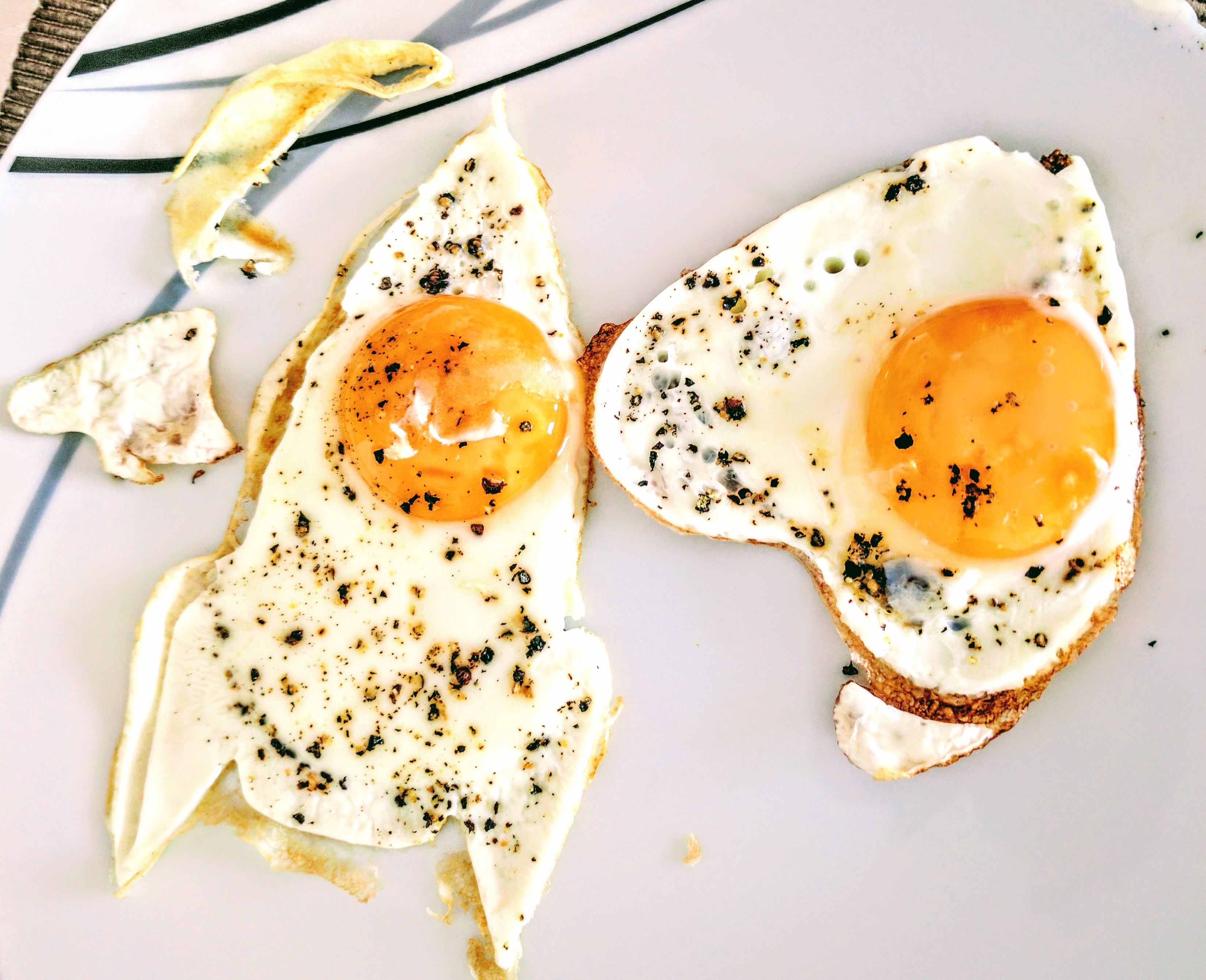
We need your HELP!
Earthquake shaking our hearts and lives
Every morning when you wake up, you give for granted that you will be back home after work, that you will share dinner with your family and friends, or maybe go out with your buddies to the cinema or for a drink. Others, wake up and take their children to school and their dog to walk. You and your partner tell to each other to have a good day. You take the tube or bus to work, and perhaps you walk on a bridge or a large street. But who knows when and how a terrorist attack could happen that kills all that you love. What would you do to save their lives or to protect them? How could you help others after the shock? We can not prevent the harmful actions of humans so easily, but we can not, for sure, avoid the destruction of natural phenomena like hurricanes, tornadoes, typhoons, floods, EARTHQUAKES, volcano eruptions, etc.
Imagine that instead of a human taking away the lives of your loved ones, it is an EARTHQUAKE. The building where you live collapsed and has been reduced to rubble. Your mother, father, and sister could not escape. After three days of constant work from volunteers and the military, they know they are dead and, to rescue the bodies, they will need heavy machinery to remove the debris of what you called once home. Where you collected memories, and what is more the remains of what you loved the most, your family. You were left behind without nothing, and perhaps you barely have money to give them a proper burial. Also, you can imagine yourself, buried in the building remains where you work. You can barely move, you are stuck, and your lungs can just get a mixture of air and dust. You can’t see anything, and you can listen to the noise of moving rocks. You will think you will die since your ribs are broken. How long you can wait for help, perhaps you will never see your loved ones again. Every second counts and the waiting is so long.
You can also imagine taking your child to school at morning. You gave a hug and kissed and let the kid go waving the hand. You never thought that it was going to be the last time you saw him or her alive. The child was trapped for hours under the rubble of the school; you were waiting overnight until they told you the news. All that I have narrated had happened, and there are more real stories like these of the earthquake disaster of 7.1 the past 19th of September of 2017. This time the epicentre was in the state of Morelos which is about 150 Km from Mexico City (the earthquake alarm was activated too late due to this reason) displaying a mixture of trepidatory and oscillatory motion. Exactly on the same date 32 years ago, one of the biggest disasters in Mexico due to an earthquake (8.1 magnitude with an epicentre near to Michoacan coast about 800 Km from Mexico City) were about 10 000 people died—unofficial records reckon 40 000 deads just in Mexico City. Also, we should not forget that about two weeks before, on the 7th of September of 2017, the hardest earthquake of the century in Mexico hit with an epicentre in Chiapas, one of the poorest states in the country [1].
As 32 years ago, many residents of Mexico City (“chilangos”) are volunteering to help the military specialist to remove the debris to find people alive. They have worked continuously, without sleep. They strive to the end, and the motor that drives them is the empathy to find someone ALIVE. The civilians organise themselves to bring food, water to the other volunteers. On the other hand, many are helping to provide supplies to the temporary collection centres. The millennial generation is helping on the streets and some others collaborating in coding to make informative websites and apps that can be accessed for free. People living in the other affected states are also pushing to help the most that they can. Many communities in the countryside in Mexico which are impoverished are also the most affected, people are sleeping outdoors and may have to do it for months. I can type many words, but you can see it for yourself in the images and videos I am sharing here.
We, Mexicans, have been portrayed by foreign movies with hats, lazy and drinking. Eating “chilli con carne”, burritos, and tacos in hard shells (all of that is Tex-Mex) which, honestly, I had never seen in my life until I moved abroad. It is true that many things are corrupted, that there are violence, femicides, substantial gender inequality. But how it could not be like that if there is no chance for the poor to grow and to be educated. According to the Organisation for Economic Co-operation and Development (OECD): “most Mexicans have low educational attainment (63% have only below upper secondary education); and the proportion of adults who have attained at least upper secondary education (37%) is one of the smallest among OECD countries, and is considerably below the OECD average” [2].
How people can have access to more opportunities and education if the 2017 basic salary of a Mexican is about € 2,081 annually before taxes (€ 95.6 monthly). The national average salary is €4,150 annually (€ 345.7 monthly) [3, 4, 5, 6]. How can you support a family with that? We, Mexicans, are hard workers and earning a little salary (barely there are holidays). The OECD reported that average employee in Mexico works 2,246 hours annually, the average employee in the world works 1,766 hours, and Germans are producing more capital for the least hours worked, 1,371 hours [7]. Of course, we are manufacturer workers, and companies from abroad invest in cheap labour. There are high qualified Mexicans but is more likely that a middle-class child can have better opportunities, regardless of attendance to a private or public education. The new generation is working hard in learning, but few can access to internet to take free courses online (manly in the cities).
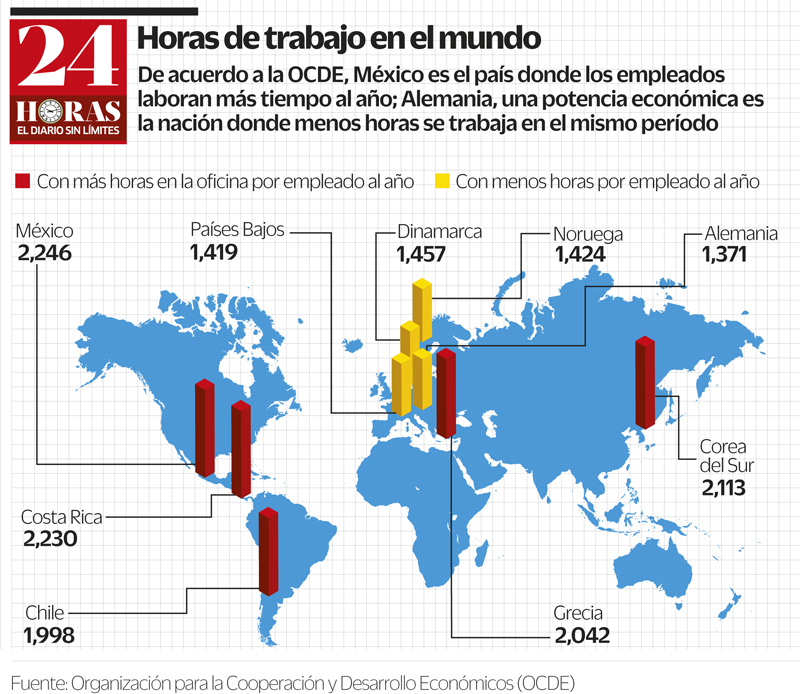
We, Mexicans, despite all the disadvantages in our country, we love our nation, our home, our PEOPLE. I consider myself a citizen of the world, and I feel hopeless of not being able to make a significant change about all the unfairness, ignorance, and prejudice in my country. But after this event, something struck in my heart, I saw that part of my people that I have not seen for too long, EMPATHY, SOLIDARITY, and LOVE for another human. We have a resilient spirit, and we try our best until the end. But we can not do it alone in this hard times. I ask you to consider donating to organisations providing emergency relief (£1 ≈ $24 MXN pesos, so any little help goes a long way!) Most of the images of destruction in media come from the cities, but many small and poor towns are also suffering. In the next months, many households must be rebuilt, and Mexico will need to rise fundings. If you can help or share this information, we will be grateful, and our hearts will not feel hopeless.
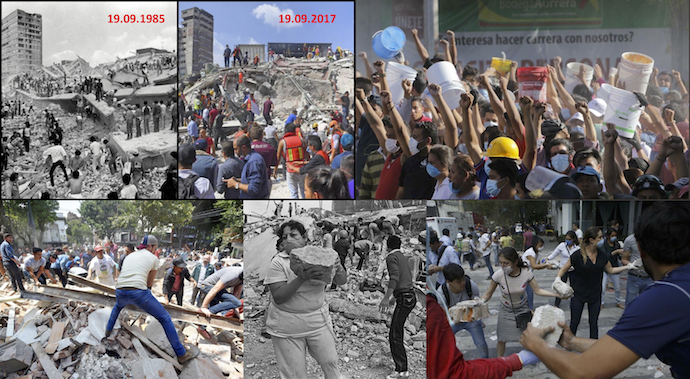
I am a lucky Mexican woman; by chance, I was born in a land of sunshine within a middle-class family. I got access to public education and scholarships to attain my BSc until my PhD. I am the only person within my closest family holding a PhD. I am an outlier of the distribution of the Mexican females population; I just got lucky to have a better fate even if I had worked hard for it. But also I feel fortunate to have close friends over the world with 38 nationalities who I know could help me to distribute this information to reach more people to help Mexico.
Where to Donate?
-
Mexican Red Cross has been accepting direct donations online and has set up an Amazon Wish List for necessary items.
-
Direct Relief, a humanitarian aid organization, has staff members in Mexico City and has pledged that 100 percent of its donations will go directly to relief efforts, which it says will include facilitating the delivery of medical supplies to affected areas.
-
UNICEF Mexico, which typically works to protect children’s rights in Mexico, has launched an earthquake relief fund.
-
GlobalGiving, a crowdfunding organization, has pledged that all money donated to its earthquake fund will go to recovery and relief efforts.
-
Fondo Unido México, part of the United Way network, has created an emergency fund to help the areas affected by the earthquakes as well as the recent series of hurricanes.
-
Funds donated to Oxfam Mexico will go toward protecting lives and rebuilding after natural disasters.
Friends from the world help! #mexicoearthquake #MexicoCityearthquake #FuerzaMexico @Fund_CarlosSlim @fundaciontelmex @TransferWise help pls! pic.twitter.com/sC9oHJtGFL
— Dr. Ariadna (@starignus) September 23, 2017
What to Know Before You Donate? (piece taken from the nytimes)
Before deciding where to donate your money, don’t be afraid to ask tough questions.
“There are a lot of individuals in times of disaster that will take advantage of the emotional response people will have,” Sara Nason, a spokeswoman for the nonprofit watchdog Charity Navigator, said in a phone interview.
The Charity Navigator website, which rates United States charitable organizations, is a good place to start when researching a nonprofit, as it does much of the legwork for you. It recently posted a list of reputable charities that are helping in Mexico.
Ask questions and seek detailed answers. Has the nonprofit explained how it is going to use its funds? Does it have a specific destination for funds donated to relief efforts?
Vetting international groups can be trickier.
“One difficulty that we see in vetting international organizations is that there is no large standardized body that takes in validated information about these organizations,” Ms. Nason said.
Enter GlobalGiving. The crowdfunding charity works with organizations in 170 countries, including Mexico, to deliver much-needed funds to local nonprofits that are doing immediate recovery work.
Closing the gap
Unsung Women in STEM
Original post published in S2DS Blog.
It is only in recent years that I have became conscious of the fact that most mentors throughout my career have been male. Trained as Physicist, from the bachelor to a postdoctoral researcher, being surrounded by men seemed perfectly normal. We just need to remember Marie Curie as the only woman on the iconic pictures of the Solvay Conference of 1927! Today, as a Data Scientist, the story does not seem too different either. But why had it felt “normal” all this time? And why do women in STEM areas still seem too few and too hidden, or even invisible from the public view, despite their outstanding contributions?

As a child, my views on science were influenced by scientific “rock stars” like Galileo, Newton, Einstein, Darwin, Carl Sagan and Marie Curie. I wanted to become one of them; unquenchable knowledge seekers, without actually paying any attention to their gender. They were just humans, like me, impatient to uncover the secrets of nature. Of course, had I known more women in science, I would have gained a broader view of the possibilities and the challenges that may lay ahead, as well as a much wider source of inspiration to fuel my endeavours.
Who would not be inspired by the likes of Hypatia of Alexandria, mathematician, philosopher and astronomer head of the Neoplatonic School, Ada Lovelace, the first computer programmer, Emmy Noether, pioneer of abstract algebra whose theorem underpins much of modern physics, Florence Nightingale, a statistician who founded modern nursing and the world’s first secular nursing school, Lise Meitner, the first woman to be given a professorship in physics in Germany and paved the way for the discovery of nuclear fission (but was, contentiously, not awarded the 1914 Nobel Prize along with his collaborator), Gertrude Mary Cox founded the Experimental Statistics Department at NC State University, Grace Hopper, created the first compiler for a computer programming language, Mary Winston Jackson, mathematician and first black female aerospace engineer at NASA, Katherine Johnson, physicist and mathematician whose calculations were critical to the success of many NASA missions, or Dorothy Vaughan, mathematician and first African-American woman supervisor at the NACA centre, taught herself and her staff females the FORTRAN programming language. Who would not feel enthused about the team that programmed the first all-electronic multi-purpose computer ENIAC: Kay McNulty, Betty Jennings, Betty Snyder, Marlyn Meltzer, Fran Bilas, and Ruth Lichterman. These are just some examples of women that have been extraordinarily influential in STEM disciplines, and whose accomplishments forged the path for more women to get opportunities within these fields.
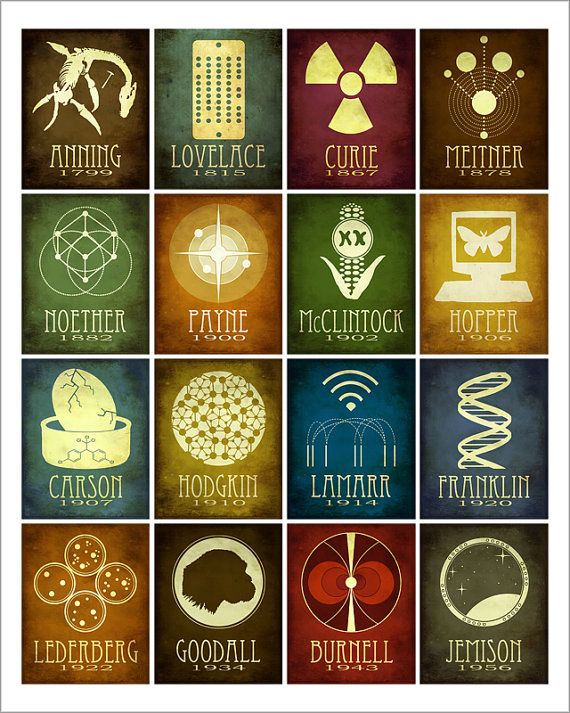
However, the road women have to walk is not yet clear of obstacles. Women still seem to be kept hidden from the sight of laypeople and, therefore, from the newest generation of children. In this era of the data revolution, women continue being a minority in the workforce. Even though more girls than ever are studying and excelling in science and mathematics, the proportion of women in the workforce is sadly declining from 52.4% to 49.6% globally between 1995 and 2015 [1, 3]; on the world’s boards seats the proportion is only 12%. Most women in the workforce, 60%, are employed in the service sector (mostly informal). [1, 2] Average earnings of women worldwide are about 60 to 75% of men’s salary [3, 4]. Looking only at computing professionals in the US, the proportion of women has shrunk from 35% in 1990 to 26% in 2013; among all engineers, women make up just 12% [5]. Tech companies such as Google, Facebook, and Apple have released the gender and racial/ethnic makeup of their technical workforce with 17%, 15% and 20% of women correspondingly. In research, even though the number of women enrolling in university is growing, many withdraw during their career progression. As a consequence, women make up only 30% of world’s researchers (you can see a visualisation of the data in the Women in Science interactive tool [6]).
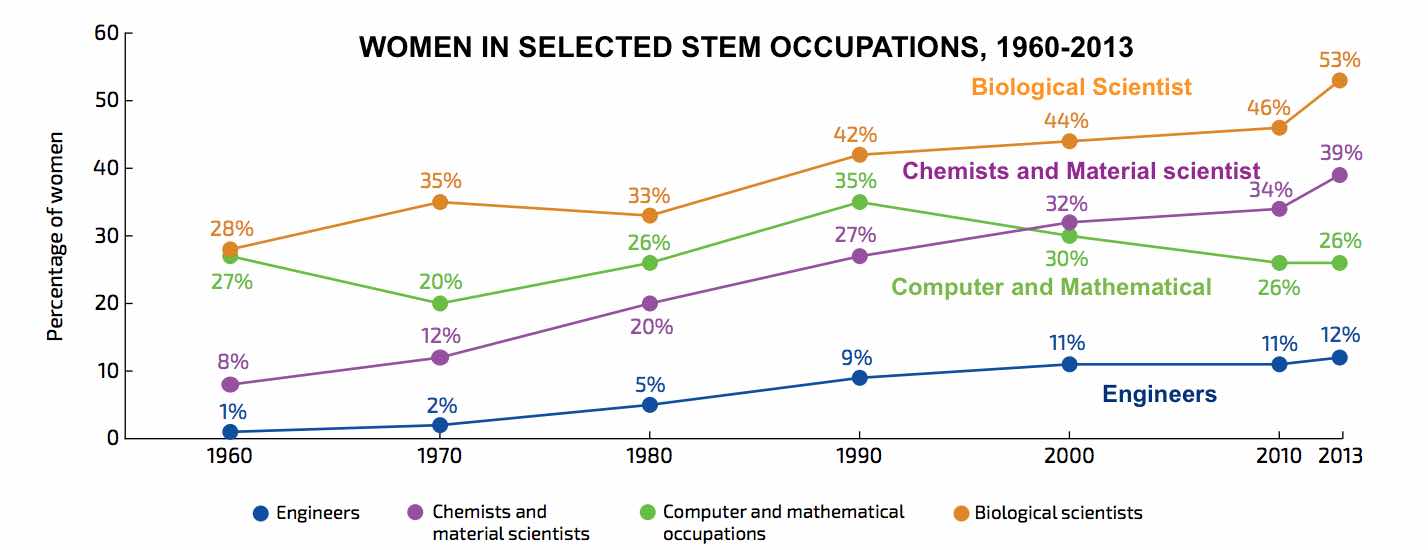
Many questions thus arise: what are the factors hindering the development of women as professionals worldwide? What are the challenges that women have to face, and what opportunities could bring more of them to Data Science and other STEM professions?
I believe the core challenges we face, holding back not just women but everyone, are stereotypes and bias. These are shaped at the heart of every culture, passed down from generation to generation, influencing how we think, treat one another, perceive ourselves and, as a consequence, the actions we take. However, they can not be modified until we make a conscious effort to do so; to intentionally drive the cultural evolution towards the benefit of our society. A better quality of life in the world can be achieved if we bring diversity to the workforce. Including the creativity, productivity, and innovation of everyone—regardless of gender, age, sexuality, background or ethnicity—makes a stronger basis for human development.
Stereotypes and bias, if we are not aware of them, lead to ineffective talent acquisition in the workforce. A study from the American Association of University Women [5], for example, has shown that for a presumed lab job position, both female and male members of the scientific faculty were more likely to select a male candidate, and offer him a higher salary, over an identical female candidate. Another study highlighted how potential employers systematically underrated the mathematical capability of women compared with men, resulting in the hiring of lower-performing men over higher performing women [5]. Worryingly, stereotype and bias effects emerge as early as childhood. A survey performed in the UK and the Republic of Ireland [7] found that both 57% of parents and 53% of teachers recognised having made subconscious stereotypes about girls and boys regarding STEM, and 54% of teachers declared to have seen girls dropping STEM subjects due to pressure from parents. In another study run by Illinois University, researchers found that five-year-old tended to believe that members of their gender were brilliant, although, by age six, girls are less likely than boys to think their gender is the most brilliant—this difference driven by the influence of gender stereotypes.
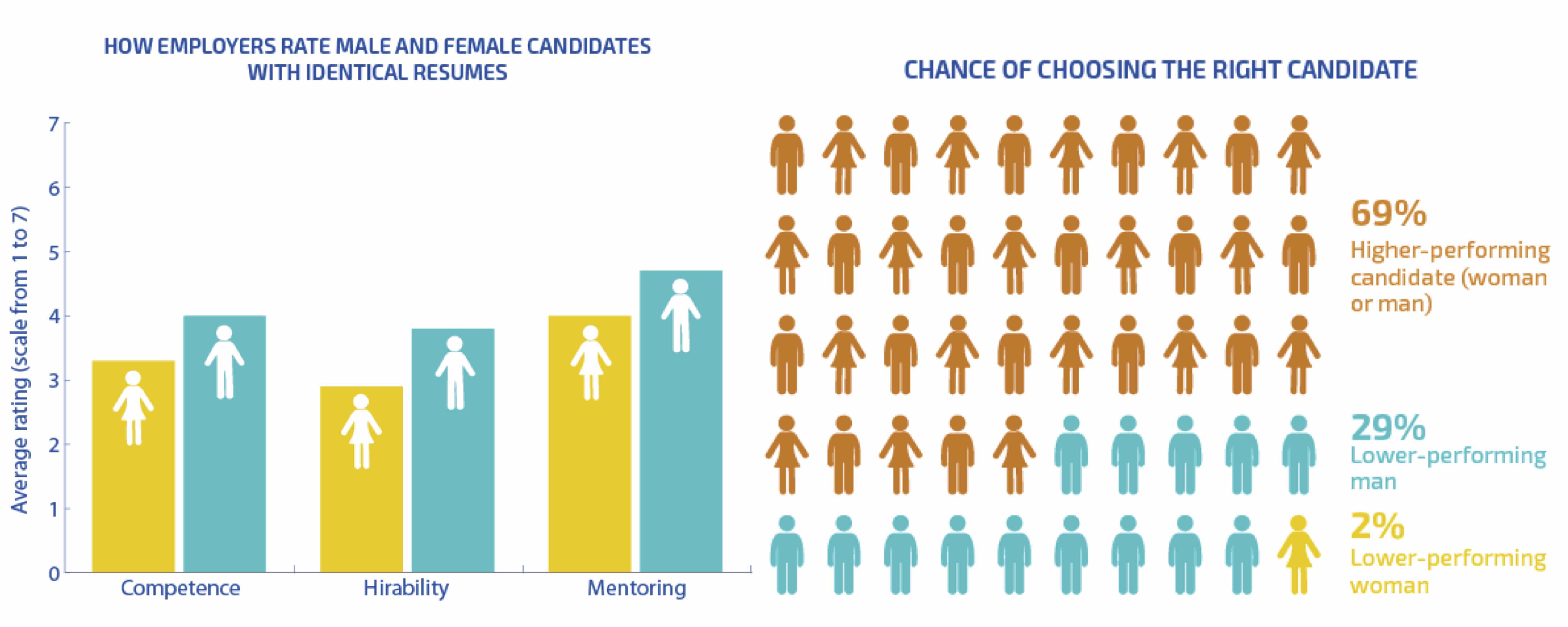
It is scary to think how the view of ourselves has been influenced over the years. After reading an article from Brittany Pugh (Data Scientist at Elder Research) [9] in which she describes two types of self-perception obstacles called the “because I am a woman” mentality and “the over-achiever” expectation, I could identify these patterns among my female colleagues. Particularly the latter, related to the impostor syndrome, has also been true for me; the hesitancy of taking on projects unless we believe we are highly qualified, or even overqualified. Apparently men do not tend to show this behaviour. These unconscious perceptions can hold us back from taking risks and making the most of excellent opportunities. Hence, we have to be self-aware of our strengths, achievements, and to get grow our confidence in our capabilities (stopping auto sabotage), and share our experience and knowledge with other women.
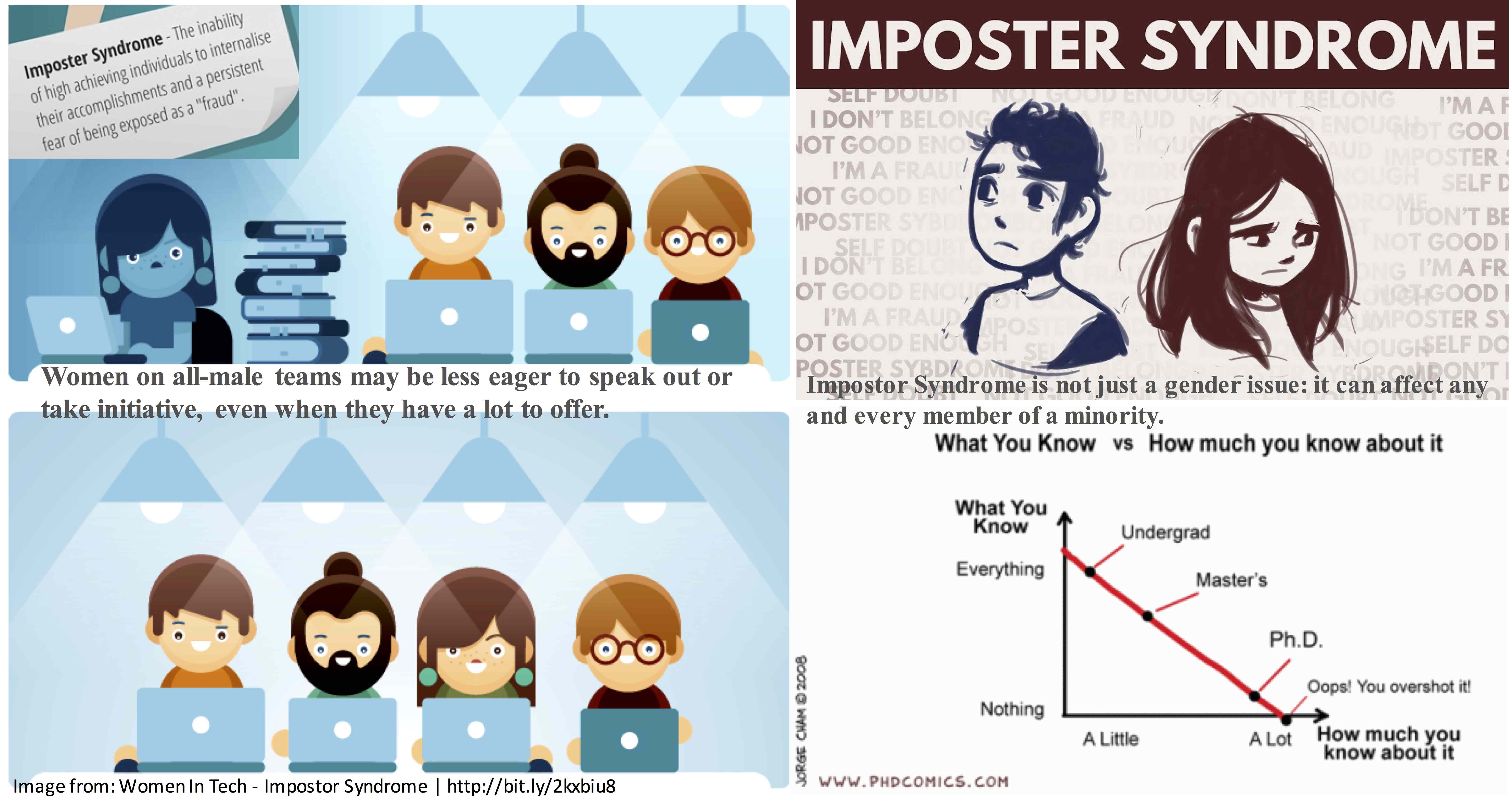
Fortunately, at a time when data is “the new bacon”, women can flourish as data scientists as there are a large and growing number of opportunities, thanks to many networking events like conferences, workshops, and talks. For example, let’s mention the BCSWomen [10], Women Who Code [11], WiDS Conference organised worldwide in 75 locations [12], Women in Data Conference [13], and the S2D2 data science training programme which is the largest in Europe with participation of 35% women. These events encourage, motivate, develop, educate and let us share experiences with other women in the field. A bright side in a data science career is that we can find a welcoming environment that supports a work-life balance [14] (providing flexibility with personal career growth and family), as well as getting the benefit of working in diverse teams that stimulate our creativity and push our continuous learning.
Bringing out more women into STEM fields, including Data Science, can be pursued by working against the bias in the core of both women and men’s minds, and by making available a range of opportunities for success. It is important to have access to role models with expertise in the field, that current and aspiring women in Data Science (and other STEM subjects) could admire and contact for advice, mentorship, encouragement, and motivation. As it turns out, they are easy to find. Now is the time for us flourish and get the chance to inspire others. It is especially the time to strive for gender parity, as Claudia Perlich (Chief Scientist at Dstillery) has said [15]: “True gender blindness. Our goal is a world where women leaders come easily to the mind of data scientists of both genders, and I no longer have to wonder whether I have been invited primarily because I am a woman”.
References
- International Labour Office, Women at Work: Trends 2016 (2016).
- Statistical Overview Of Women In The Workforce.
- UN Women. Facts and Figures: Economic Empowerment.
- World Bank Gender Data Portal.
- A study from American Association of University Women (AAUW): Hill, C. (2013). Solving the Equation: The Variables for Women’s Success in Engineering and Computing.
- UNESCO: Women in Science interactive tool.
- Business Wire website (2017, Feb 7). Accenture Finds Girls’ Take-up of STEM Subjects is Held Back by Stereotypes, Negative Perceptions and Poor Understanding of Career Options.
- Lin Bian et al (2017, Jan 27). Young girls less likely to attribute brilliance to their own gender.
- Brittany Pugh (2016, Jul 21) Obstacles and Opportunities for Women in Data Science.
- BCSWomen
- Women Who Code.
- WiDS Conference.
- Women in Data Conference.
- Glassdoor survey for best work-life balance. Claudia Perlich (2014, Oct 20).
- Women in Data Science Are Invisible. We Can Change That.
Gizmo(Physical Computing) at IC
A Workshop to Develop your Ideas
The last winter term I enjoyed as the instructor on the Raspberry Pi and Python programming of the Gizmo (Physical Computing) workshop along with my friend Jing Sheng Pang. It is a module of the program second year of the MEng in Design Engineering at the Dyson School of Design Engineering at Imperial College. At the end of the sessions, the students will be challenged to design and produce functioning prototypes, demonstrating principles, for a machine that effectively integrates machine elements, sensors and actuators and software to perform a specified function. I was thrilled to see the outcome of all the effort of the students. Here I share a brief video of some of the projects I had the opportunity to evaluate on the presentation day.
One of my favourites ones (because I could help just a bit on the programming side), was the work of designed and developed by Ina Roll Backe, Tilly Supple, Carla Urbano, and Bea Lopez. They constructed the BMIC, which is a mechanical drum sequencer. From a 4x3 step sequencer controller, the user can input combinations of beats and instruments. The inputs are interpreted by a programmed Raspberry Pi, that sends output to three solenoids accordingly, each attached to a drum hitting mechanism. I enjoyed the show of the BMIC.
If you want to follow the material taught on Raspberry Pi and Python programming you can go to the Blog of Gizmo.